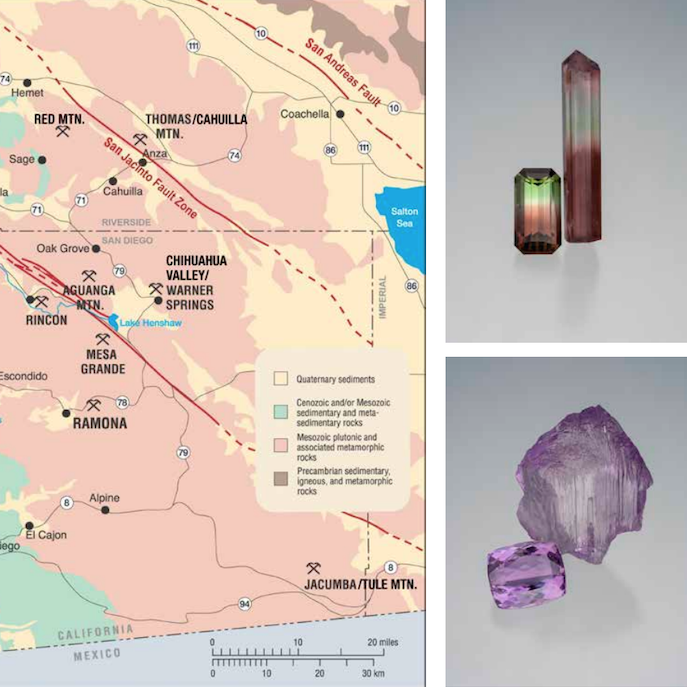Overview of the “GEM” special exhibition at the NMNS
A special exhibition “GEM” was held at the National Museum of Nature and Science (NMNS), Tokyo, from February 19th to June 19th, 2022. The exhibition covered all aspects of gems, from their origin on the Earth, the science behind the beauty of gems, varieties of gems, history of cutting and setting techniques, to historic masterpieces. 1000 m2 of exhibition hall was filled with about 200 varieties of thousands of pieces of gems. The exhibition attracted over 300,000 visitors.

The display was composed of 5 chapters. The first chapter, “The Birth of a Gem” told a story of where and how gem minerals occur. Among a number of large specimens showing gem minerals on top of host rocks, a pair of gigantic amethyst geodes each 2.5 m tall and ~2.5 t in weight especially caught visitors’ eyes (Figure 1). The second chapter, “From Gem to Jewel” explains mining and cutting processes, shapes and styles of cutting. In the third chapter, “The Essence and Diversity of Gems”, combinations of rough and loose gems were displayed for each of about 200 varieties of gems. They were grouped by several topics explaining important nature for gems, i.e., brilliance, color, hardness and toughness, dispersion, and other optical effects. As an example, a color circle made of 365 stones demonstrated rich color variation and tones of gems (Figure 2). A lot of rare gem minerals such as pezzottaite, afghanite, magnesiotaaffeite-6N’3S (musgravite), and also fluorescent gem minerals were displayed. Jumbo gems, such as 21,290 ct of rock crystals and 7,626 ct of topaz, loaned from GIA were also displayed here. The fourth chapter “How a Gem becomes Jewelry” illustrates how important it is to set a qualified loose gem with precious metals in its proper placement to tailor a beautiful piece of jewelry. It was exemplified in the beautiful world of Gimel Trading and Van Cleef & Arpels’ creations. The last chapter, “Ultimate of Gems” presented historic masterpieces from collection of Albion Art Jewellery Institute. The collection ranged from Mesopotamian carvings of c.a. 3000 B.C. to royal jewelry pieces of the Middle Ages to modern ages. These pieces of jewelry, which once existed only for a limited number of people, are now inherited as historical arts and cultural assets that transcend the realm of ornaments.





